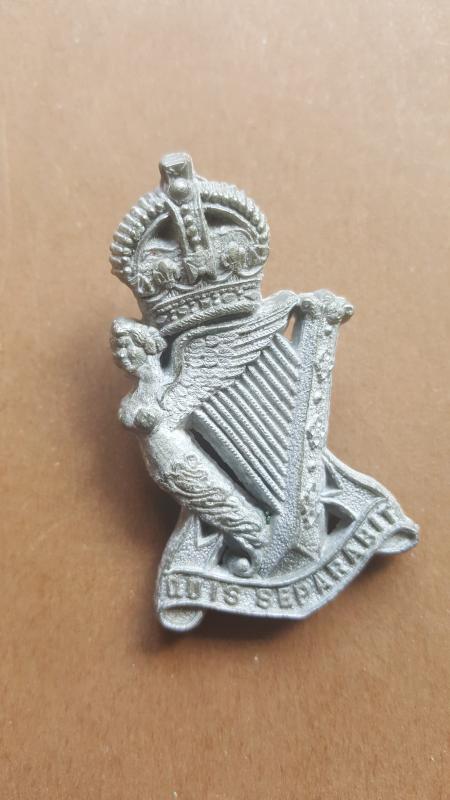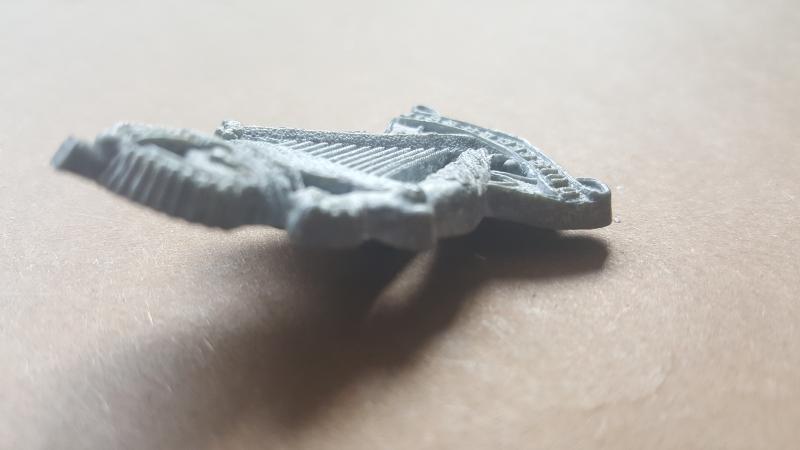A nice and difficult to find plastic cap badge to the Royal Ulster Rifles
This is a neat example of a plastic cap badge to the Royal Ulster Rifles. When war was declared the 1st Battalion was serving in India, with 31 Infantry Brigade Group, which was trained in mountain warfare. When the brigade returned to the United Kingdom, it was decided that, with its light scale of equipment, the brigade could be converted into a glider-borne unit. Renamed 1st Airlanding Brigade, part of 1st Airborne Division but later transferred to 6th Airborne Division as part of 6th Airlanding Brigade). Carried in Horsa gliders, the battalion took part in Operation Mallard during the D-Day landings in 1944 and Operation Varsity, the airborne element of Operation PLUNDER, the crossing of the Rhine in March 1945. The 2nd Battalion was part of the 9th Infantry Brigade, 3rd Infantry Division with the British Expeditionary Force and took part in the Dunkirk campaign. The battalion returned to Europe for the D-Day landings in 1944 and fought right through to VE-Day. The Royal Ulster Rifles had the unique distinction of being the only British infantry regiment to have both of its regular battalions involved in the Normandy landings. Riflemen of the Royal Ulster Rifles, 6 Airlanding Brigade, aboard a jeep and trailer, driving off Landing Zone N past a crashed Airspeed Horsa glider on the evening of 6 June. This badge is in a good condition except form a light curve to the plastic.
Code: 51723



